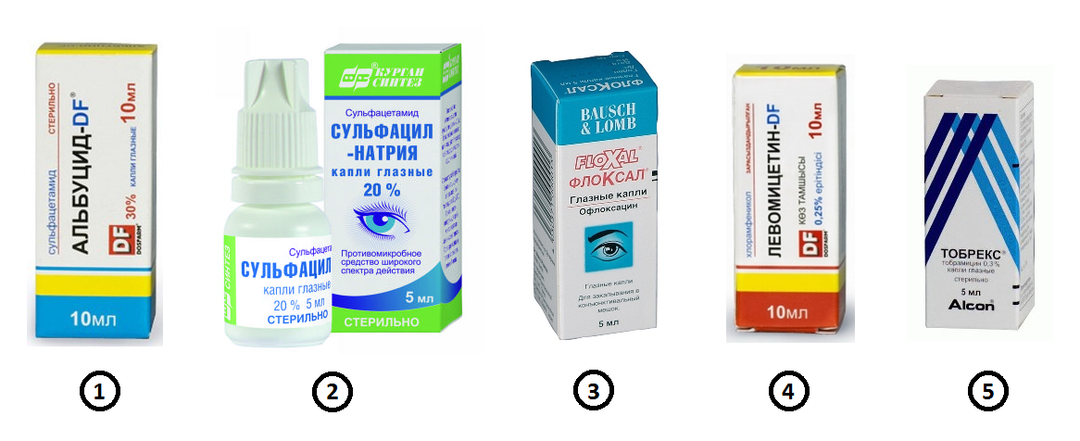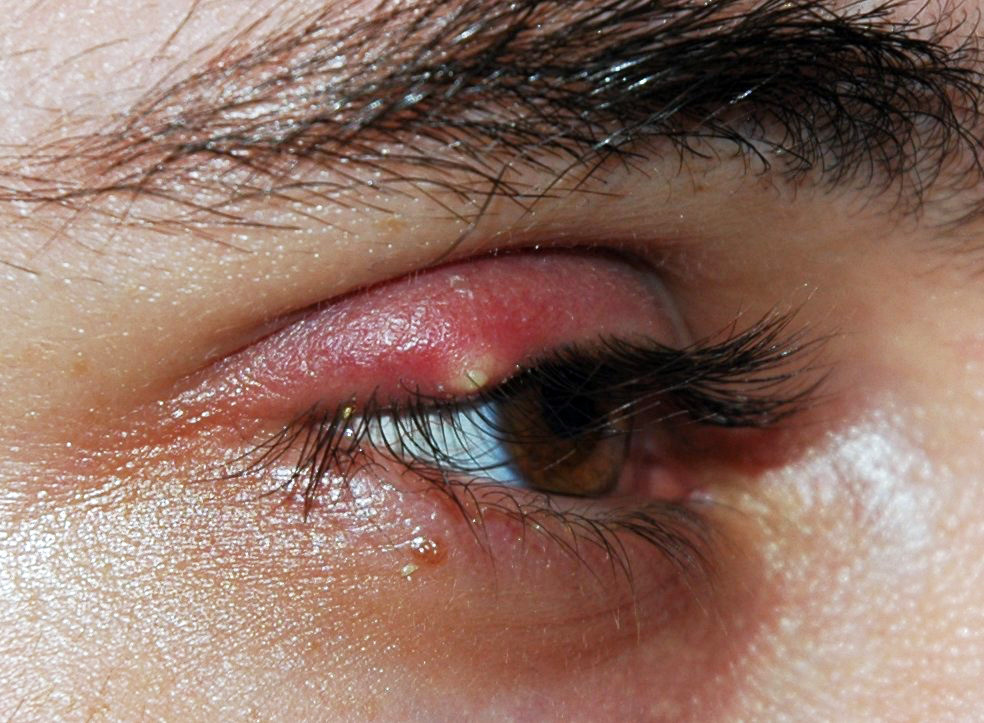Cataract: Symptoms, Diagnosis, Treatment and Prevention
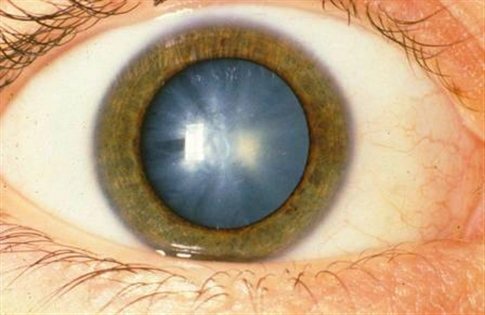
The physiology of the eye provides for the presence in it of a special structure - the lens.It is a kind of optical lens through which rays of light pass and focus on the retina.
Cataract is a complete or partial clouding of the capsule of the lens.The pathological mechanism of cataracts is triggered when water-soluble proteins in the lens, ensuring its transparency, are replaced by water insoluble.As a result of this process, inflammation and edema develop in the lens area, and most importantly - its transparency decreases, which is clinically manifested by a decrease in visual acuity in the patient.A person begins to see a fuzzy blurry picture in front of him.Cataract is a chronic pathology, which certainly progresses.
Table of Contents: Causes of Cataract Cataract Varieties Cataract Symptoms Diagnosis Cataract Complications Cataract Treatment Cataract Surgery Cataract PreventionCauses of Cataract
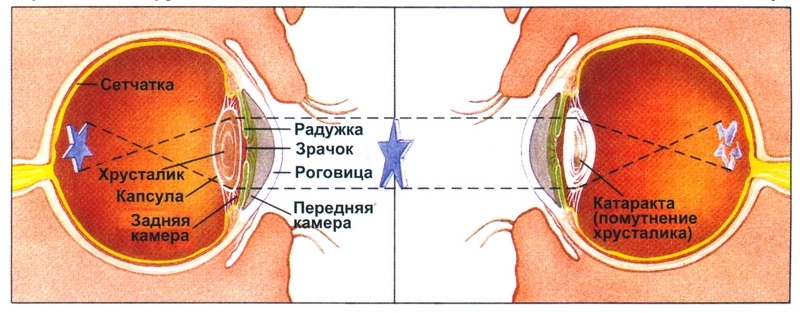
Most often it is diagnosed after 50 years, but can develop at any age.Statistics say that 50% of women and 25% of men after 70 years old suffer from cataracts and that's why they consider it to be the most common disease in the world for elderly people.Methods of prevention can somewhat delay the development of cataracts in old age, but the older the person, the higher the risk of its formation.
Given that cataracts most often develop in people aged - the main reason for its appearance is the aging of the body.But besides this there are a number of other factors that can trigger the development of the pathological process.
It is known that the disease can be acquired and congenital.
The following conditions refer to the factors causing congenital cataract:
- Rh-conflict of mother and child;
- diabetes mellitus;
- intrauterine changes;
- inflammation in the inner layers of the eye;
- viral infections in the mother;
- rubella, toxoplasmosis, influenza transmitted by a woman during pregnancy;
- deficiency of proteins;
- hypoglycemia in the mother.The cause of acquired cataracts can be:
- eye injury;
- is an aging organism;
- long-term use of funds with a corticosteroid content;
- high degree myopia;
- eye diseases, which are based on a violation of the metabolism of the lens;
- endocrine system diseases( thyroid gland);
- diabetes mellitus( diabetic cataract);
- alcoholism;
- poisoning with toxins( mercury, thallium, naphthalene, etc.);
- increased level of radiation;
- some skin pathologies( eczema, neurodermatitis, scleroderma);
- common severe illnesses( typhus, smallpox, malaria);
- long-term smoking;
- genetic predisposition;
- anemia;
- Down's disease;
- eye burn;
- features of the profession( work in places where there is an increased risk of eye burns);
- excessive ultraviolet irradiation;
- Radiation exposure.
- is a bad ecology.
Cataract varieties
The lens may become cloudy on one eye or immediately on both, with this in mind, a two-sided or one-sided cataract is distinguished.
Relative to the degree of changes in the lens, cataract is allocated:
- initial;
- is ripening;
- is mature.
Given the localization of turbidity directly in the lens, cataracts can be :
- nuclear;
- front;
- total;
- rear;
- cortical.
Cataract can have different shapes:
- star;
- cup-shaped;
- spindle-shaped;
- discoid;
- outlet.
According to the density of the nucleus in the lens, a hard or soft cataract is isolated.
Acquired cataract is always progressive, congenital - no.
Symptoms of cataract

The clinical picture of cataract can manifest itself with different symptoms, it all depends on the stage at which the pathological process in the lens is located.
Its main manifestations include:
- Dvoenie in the diseased eye.It manifests when the healthy eye is closed and relates to early symptoms, which disappears with the progression of cataracts.
- Image is not clear.A person sees vague images both at near and far distance, and most importantly glasses and contact lenses do not correct this defect.Patients say that their eyes are obscured by a veil or fog.
- Glare and flare before your eyes in the dark.
- Deterioration of night vision, light sources seem excessively bright.
- The appearance before the eyes of flashing artifacts - spots, strips, balls.
- There are difficulties in reading, writing, working with small details.
- A halo is observed when viewing the light source.Because of this symptom, a patient with cataract can not drive a car.
- Temporal vision improvement.
- Need for frequent changing of glasses( the visual acuity decreases rapidly).
- Violation of the perception of colors( they become pale, especially - blue and violet).
- In the process of cataract ripening, the patient's pupil acquires a white turbid color.
Each type of cataract has a typical clinical picture with its characteristic features:
- The posterior polar cataract is characterized by a cloudiness that the doctor discovers at the posterior pole of the lens.It has the form of a sphere of white color.
- Diabetic cataract is diagnosed if the opacities in the lens are in the form of white flakes and can be detected throughout its surface.Also in parallel, you can see the symptoms of changes in the iris.
- Anterior variety is a white spot with noticeable clear boundaries.The cataract itself is pointed, pushed forward, it is called the pyramidal anterior.
- Soft dense cataract implies the presence of turbidity of the entire lens.Its masses are diluted, and in the future a dense bag is formed.
- Central cataract has the shape of a ball that is in the center of the lens( its diameter is up to 2 mm).
- Toxic species is manifested by opacities of the lens under its capsule, and subsequently spreads to the cortical layers.
- Spindle-shaped cataract has a similar shape to the name and it can be found along the entire length of the lens itself.
- The age-old type of cataract is determined by very many symptoms, which depend on its degree: initial, mature and overripe.
- Congenital zonular form is a cloudy core with transparent layers.
- A tetanic cataract has similar signs with a diabetic, it is determined by the symptoms of the disease that caused the onset of a malaise - hypothyroidism of the parathyroid glands.
Diagnostics of
Given the prevalence of senile cataract in clinical practice, the timely detection of this disease is reduced to a mandatory visit to the ophthalmologist after 60 years.
Diagnosis of cataracts implies:
- Inspection.At objective survey of the patient the doctor will see opacities, often located in different parts of the eye( on the periphery of the lens or opposite the pupil).The turbidity itself has a gray-white hue.
- Instrumental examination.
To clarify the diagnosis for an ophthalmologist suspected of having cataracts, the following instrumentation diagnostic techniques can be assigned:
-
 biomicroscopy - eye examination using a slit lamp;
biomicroscopy - eye examination using a slit lamp; - definition of visual acuity;
- densitometry;
- definition of fields of vision;
- ultrasound;
- measurement of intraocular pressure;
- ophthalmoscopy.
Complications of cataract
An untreated and late diagnosed cataract can cause such complications:
-
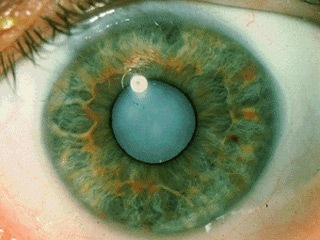 Amblyopia( obscurant) is a consequence of congenital cataracts, which are usually found in children.With such a complication, the retina is atrophied, and eventually it can completely stop performing its functions, because through the pathological lens it does not receive signals from outside.Treatment for neglected amblyopia is extremely rapid.
Amblyopia( obscurant) is a consequence of congenital cataracts, which are usually found in children.With such a complication, the retina is atrophied, and eventually it can completely stop performing its functions, because through the pathological lens it does not receive signals from outside.Treatment for neglected amblyopia is extremely rapid. - Dislocation of the lens - complete displacement and subsequent separation from the ligament that holds it.The patient complains of a sharp deterioration of vision, the lens must be completely removed.
- Blindness( amaurosis). It is proved that cataracts more often than other eye diseases lead to absolute loss of vision, but this process occurs gradually.It is important to start treatment in time.Amavroz - a complete loss of the opportunity to see at least something.
- Fakogennaya glaucoma is diagnosed on the basis of a secondary increase in intraocular pressure in cataracts, which is the reason for the increase in the lens in size.In this case, the lens is removed and a treatment is prescribed to normalize the pressure.
- Facial Iridocyclitis is the development of the inflammatory process in the iris and ciliary body.The patient complains of severe pain in the eye, head, the mesh of vessels in the eye acquires a red or cyanotic color.In this case, the removal of cataracts by surgery is indicated.
You can avoid these formidable complications only in time by applying for medical help when the first symptoms appear.
Cataract treatment
Cataract treatment can be of two types: medical and surgical.People's treatment can only be used as an auxiliary treatment and only after consultation with the attending physician.
Medical preparations for the treatment of
Important: to Apli for cataracts are effective at the initial stage of the disease.
In particular, doctors include the following treatments and procedures in the treatment plan:
-
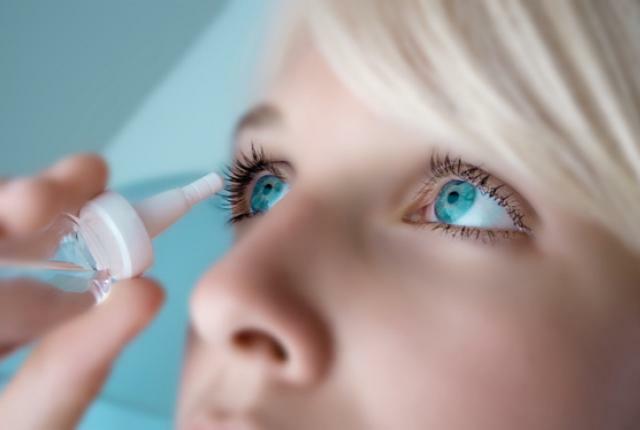 Vitayodourol, Vitsein, Vitafakol( interfere with cataract development at the beginning of its formation, used as instillations in the conjunctival sac);
Vitayodourol, Vitsein, Vitafakol( interfere with cataract development at the beginning of its formation, used as instillations in the conjunctival sac); - drops with cataracts containing ascorbic acid, riboflavin, nicotinic acid( instillations);
- electrophoresis with cysteine solution( 40 procedures);
- preparations for the treatment of a disease that caused cataracts( calcium preparations, thyroid hormones).
Cataract surgery

Surgical removal of cataracts involves the excision of the pathological lens.If necessary, immediately after removal, replace it with an artificial one.
It is important that almost always after the removal of cataracts complete restoration of vision occurs.Modern ophthalmology involves the use of exceptionally reliable and accurate technique during the operation on cataracts.
The final result of the operation depends on the condition of the optic nerve of the eye, the chosen technique of intervention, the model of the artificial lens that was implanted, and the patient's follow-up to the doctor's recommendations.
After cataract, the patient must follow the following rules for full rehabilitation:
- wearing sunglasses( regularly);
- does not lift weights;
- does not rub eyes with hands;
- not sleep on the side of the operated eye( 21 days after surgery);
- Do not drive the car until there is a complete restoration of the eye;
- do not use makeup for 30 days after the operation.
Note: is the norm when, after a cataract operation, the patient sees a slightly blurred image.This is the result of stitches on the eye and dilated pupils.After a while the seams will dissolve, the pupil will narrow, and the objects will have clear outlines.
It is allowed after the operation on a cataract to wear lenses or glasses.It even promotes the fastest healing.
Cataract prophylaxis
The prevention of this disease consists in observing such items:
- obligatory regular attendance of an ophthalmologist in old age;
- quitting;
- preventive reception of vitamin E;
- balanced proper nutrition.
Detailed information on the symptoms, methods of diagnosis and treatment of cataracts you will get by viewing this video review:
Viktorova Julia, obstetrician-gynecologist

